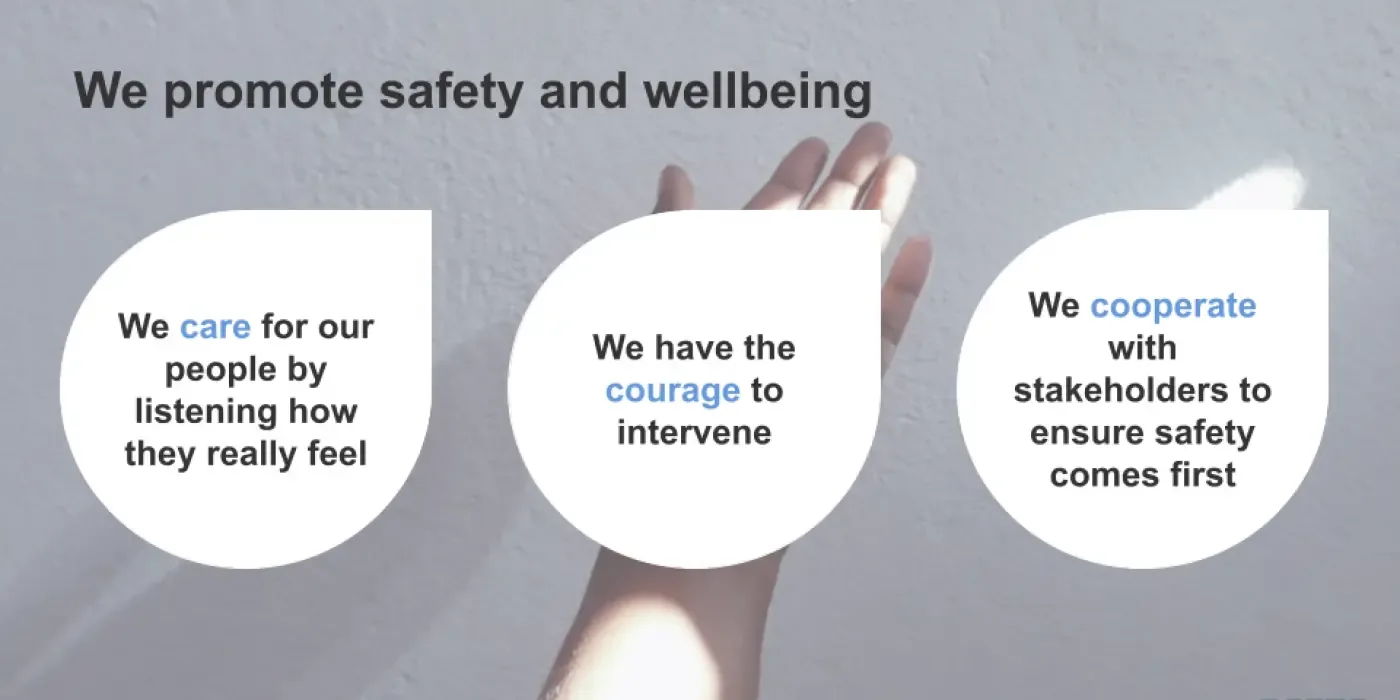
Sustainability
3 minute read
How do you commit to safety?
Safety is important. I can not imagine there is a person who does not confirm that. However, especially in an office based job, safety seems a bit distant. Many can think that “it is another team’s, or another person's, responsibility”. Nonetheless also our work in the offices have a big impact on safety. Our decisions and actions can influence safety in another part of the organization.
Safety, which also includes wellbeing, is something where we all have a role to play. And this isn't without an obligation.
The need for safety culture development was raised by employees
In 2013, Neste studied organisational culture and asked our people what kind of cultural elements would help us meet our strategic objectives. Safety was one of the highlighted elements at the time. As a result, we asked all our teams to consider how they could influence the development of our safety culture. Since 2015 Neste people have made public Team Safety Commitments on how a team drives safety and wellbeing as part of its purpose. The team safety commitments are important drivers to help us achieve our safety vision: No harm. Together.
My first ever public safety commitment
I have worked in several international companies where safety was truly the #1 priority. But making and publishing a commitment? I had never done that. Until now. And this makes it very personal.
With my team, we wanted to include three important aspects in our team’s safety commitment. First aspect is mental health and wellbeing, which has become even more important when working remotely. As a leader, an environment needs to be created where people can speak up and are comfortable saying when they are not fine. Second aspect is stop work authority, which means that when we see unsafe behaviours, we stop people doing them.This applies in operations like our terminals, but also stepping in when you see people who are clearly overloaded and stressed. And the third, safety attitude. How can we embed safety culture in our own organisation, internal stakeholders and external stakeholders? For example, in marine safety we have to make sure that vetting procedures are followed. Even when we are under time pressure or when costs could be reduced.
Our Team Safety Commitment is linked to our values
These important aspects are linked together and also strongly linked to our values: we care, we have courage, we cooperate. After our discussions my team came up with the following safety commitment:

A commitment has no value if we do not implement it in our actions and live by it. We put our commitment into practice with concrete actions that we agreed to come back to every quarter. Examples of these actions are: discussing the workload in our forward discussions, adding safety discussions to each team's scorecard, discussing and sharing safety practises with our stakeholders and including safety in our service providers contracts.
The intensive discussions, making it a commitment and defining actions made me rethink safety and my role in it. How can we take safety into account in every aspect in our lives, at work and at home and as a leader and human being?
#safetyblog
As Vice President Logistics & Operations for the Renewables platform, Annika Tibbe and her team are responsible for the logistics and operations from suppliers to Neste and from Neste to our customers.
